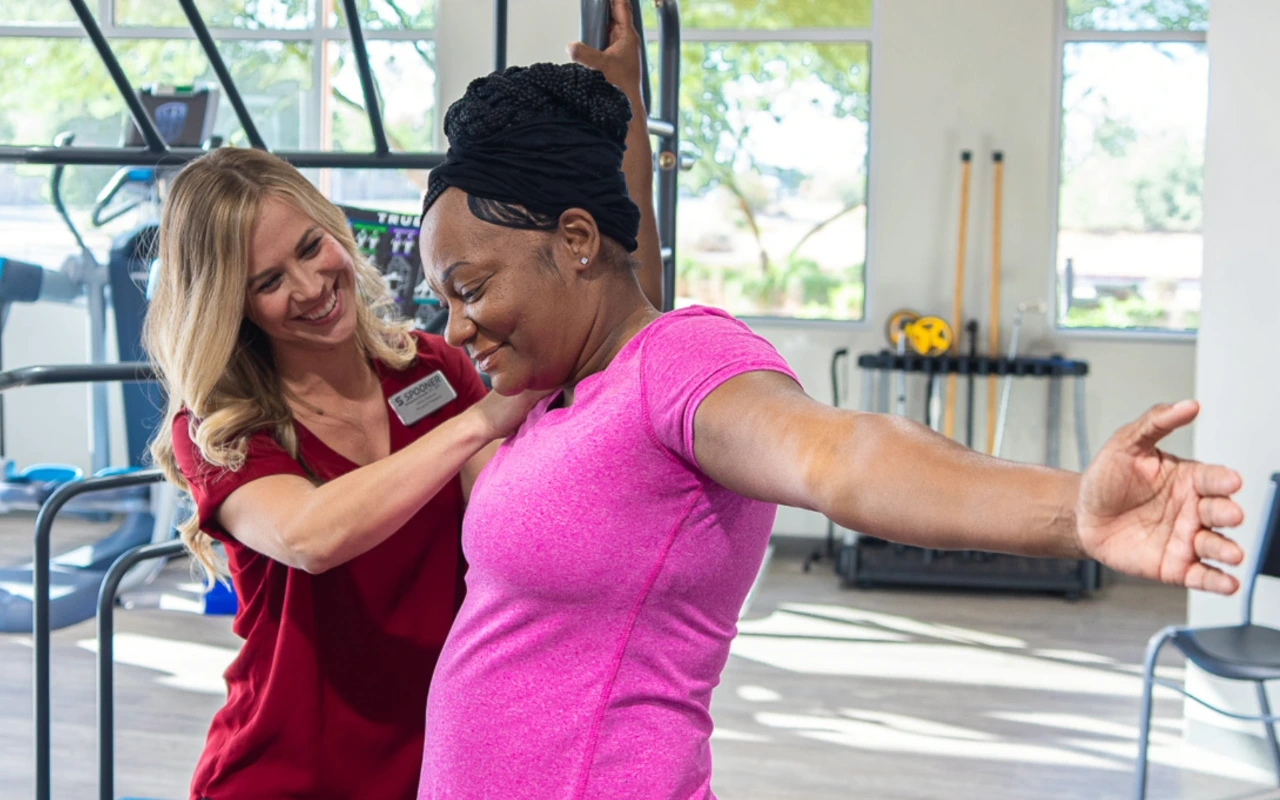By: Emily Stafford, PT, DPT, CAFS, FAFS
It is so important to perform regular self-exams for breast cancer. The majority of new breast cancer cases are identified with self-examination.
So, what do we do for self-exams? How do we know if we are doing them right?
The most important thing is to do them. An essential benefit of self-examination is to become familiar with your “normal”. What does your tissue feel like? If you are examining yourself enough with these few tips in mind, you will likely be aware when something new or different pops up.
4 Tips to Check for a Lump
Tip #1: Perform the exam at approximately the same time in your cycle.
You don’t have examine yourself on the exact same day of your cycle, but, if you can remember to perform one during your menstrual cycle, that can be an easy time of the month to remember. This is mainly to ensure that you have similar hormone levels impacting your tissues for each exam.
Tip #2: Examine yourself in the same body position.
If you remember to examine yourself standing in the shower or in front of a mirror, be consistent with that. Or, if you prefer to do it laying or sitting, do it laying or sitting. This way, the tissues are generally in the same or similar positions, and you will feel the normal composition of your chest in those positions.
Tip #3: Feel all the way up to your armpit.
You have some important lymph nodes in your armpit. These are called axillary lymph nodes- level 1 is located near the bottom near the start of your arm, level II is located the middle armpit, and level III is in the upper armpit near the breastbone. Cancer cells can start or travel to your axillary lymph nodes and there is often less thick tissue here, so it can be useful to include your armpit in self-examination.
Tip #4: When you come across something that feels different, call your doctor.
Your doctor will be able to determine if what feels different to you feels abnormal to them. You should reach out with increased urgency if you find a lump that is rubbery or painful, bloody discharge from the nipple, or bright red inflammation (like a bug bite or a rash) on your breast that you can’t explain.
PT for Pre-, During, and Post-Cancer Treatment
If you are diagnosed with breast cancer, your Spooner breast health team is here to help you during every stage of your treatment and into survivorship. We help you know what to expect in terms of post-op recovery and how to cope with the day-to-day afterwards. Our team knows what you are going through and how to look ahead to potential problems to prepare you. For example- how to get up without the use of your arms post-op.
During treatment, we work to preserve your mobility as much as possible. A side effect of radiation is tissue shortening or thickening, and we work to keep it as flexible as we can. With chemotherapy, we can help with pacing exercise appropriately to maximize your energy, maintain reasonable activity levels, and avoid overtaxing your body. There are certain chemotherapy drugs that negatively impact your heart, so finding the right balance of aerobic exercise and rest is important.
After you have completed treatments, we can help to regain your motion and get you back to the activities you love. We may progress and regress your exercises as you make your way through treatments, but we will be with you every step of the way.
Schedule an appointment with a Spooner Breast Health Therapist today!

